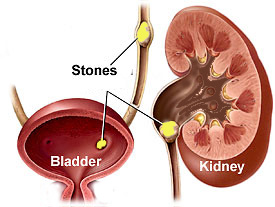- Home
- About Us
- Conditions Treated
- Treatment Offered
- Testimonials
- Gallery
- News And Events
- Urology & Andrology
- Blogs
- Contact Us
Urinary Stone Removal Treatment
Mostly, kidney stones will be so small in size that they can be passed out in the urine. However, if you are experiencing severe pain, your might be administered painkillers. The general physician might prescribe painkillers, anti-emetics or both, which you can take at home.
Treating large kidney stones

If a kidney stone is so large that it cannot be passed naturally i.e. if the stone is 6-7mm in diameter or even larger, you may have to other urinary stone removal treatment options which could include:
At Urologist India, you receive comprehensive care for urologic disorders. Our urologists are dedicated to providing each patient with the best care possible. For the best urinary stone removal in Chennai that suits your needs, get in touch with our professional.
Get in touch with us
Testimonials
About Dr. N. Anandan

Dr. N. Anandan is a senior consultant at Kauvery hospital and Apollo spectra hospitals in Chennai
Read MoreTreatments
Conditions Treated
Treatments Offered